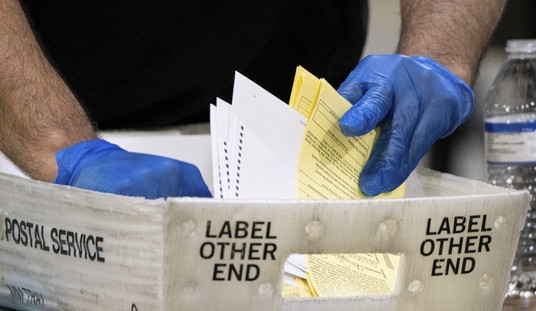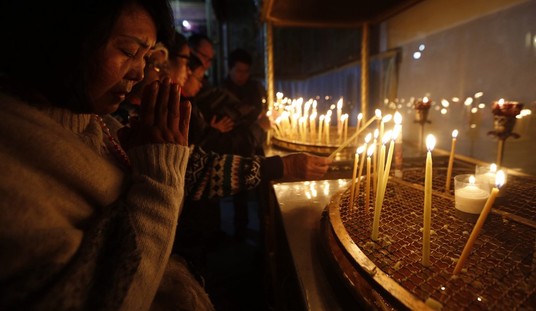The Soviet Union’s decades-long occupation of Estonia meant residents couldn’t express their political views, celebrate Christmas at home, or do much of anything else most people take for granted.
But they could still sing.
The new documentary The Singing Revolution from directors James Trusty and Maureen Castle Trusty recalls Estonia’s nonviolent methods which slowly but surely overthrew Soviet oppression.
Between Revolution and the recent Charlie Wilson’s War, perhaps the movie industry is ready to admit the Soviet Union was, indeed, an Evil Empire.
The film recalls Estonia’s tortured history, which grew significantly worse in 1940 during the “Year of Suffering.” Soviets stormed Estonia’s borders and slaughtered thousands for no reason save to establish fear and total obedience.
Estonia’s problems intensified shortly thereafter when Nazi Germany began jockeying with the Soviets over which country would occupy the land.
The Estonians’ plight didn’t move the Western world into action, although nations could be excused for not rushing to their aid given the fact that World War II was in full swing.
When the Second World War ended, Soviets reclaimed their hold on Estonia, hauling anyone dumb enough to argue against the occupation to Siberia. Or worse.
“They were very effective in making you scared,” one of the film’s many Estonian experts declares.
The communist propaganda machine kicked into high gear, with Soviet instructions overseeing every aspect of the Estonians’ lives.
But an early misstep let a glimmer of national pride sneak through.
The Estonians were allowed to gather each year to sing songs in a massive public ceremony. But one year some singers broke free from the Communist party play list long enough to sneak in a pro-Estonia ballad, “Land of My Fathers, Land That I Love.” The Soviet handlers, caught off guard, let the song continue to its conclusion. What else can an occupying army do when thousands of people refuse to leave the stage?
That tiny moment galvanized the country, setting off a democratic spark that would smolder for decades. The song marked the first of many nonviolent measures which let the Estonians keep their culture alive.
The Soviet system brought grinding poverty to its various territories, a situation which lingered for years before President Mikhail Gorbachev took control in 1985.
Gorbachev installed policy reforms known as perestroika (“restructuring”) and glasnost (“openness”) which gave Estonians all the wiggle room they needed to continue their songs of freedom.
The end of Soviet rule was inevitable once those reforms kicked in. Freedom is the genie in a bottle that can’t be easily corked.
Narrator Linda Hunt gives “The Singing Revolution” the necessary gravitas, but her stern approach also makes the film feel like a homework assignment during some segments. Good thing the filmmakers have a wealth of footage to fall back on, much of it documenting the kind of nail-biting drama you’d find in a Hollywood action picture.
Consider the tension surrounding a scene late in the documentary, when two Estonian soldiers stare down a wall of Soviet soldiers and tanks.
What’s remarkable about the film, beyond the pull of history, is the Estonians’ collective patience. They could have resorted to violence at any point during the occupation. Who would have blamed them? Instead, they chose nonviolence again and again, either by using their bodies to protect their fellow citizens or by singing their songs of peace and love. It’s a lesson oppressed people the world over might heed. The Estonians were brave enough, smart enough and patriotic enough to find, and exploit, the smallest wedges in the Iron Curtain.
Their methods, however, required decades to find success.
The earliest Soviet troops didn’t blink when it came time to shoot an Estonian troublemaker. Later, after the soldiers saw years of peaceful protests, they found it much harder to pull their triggers. Even the harshest of invaders, we learn, had a dollop of humanity still flickering within them.
The Estonians appear to be an unlucky lot, born to a country sought after by the 20th century’s worst tyrants. But the people also struck back at all the right times to have the maximum impact.
The Tustys rely on conventional film making techniques to retell this story, and at times the absence of cinematic flourishes makes the film feel more like a polished cable production than a big-screen event.
The lack of razzle-dazzle can’t diminish the heartfelt testimonies of Estonians who tell us what it took to bring freedom back to their homeland. And Estonia’s natural beauty doesn’t need any camera trickery to delight the senses.
The final images in The Singing Revolution could bring a lump to everyone but Fidel Castro’s throat — the site of a freed people basking in freedom.
One only wonders what former Communist sympathizers might say while watching this movie.
The Singing Revolution
Directed by James Tusty and Maureen Castle Tusty
94 mintues/ Not Rated
Christian Toto is a freelance writer and film critic for The Washington Times. His work has appeared in People magazine, MovieMaker Magazine, The Denver Post, The Pittsburgh Tribune-Review and Scripps Howard News Service. He also contributes movie radio commentary to three stations as well as the nationally syndicated “Dennis Miller Show” and runs the blog What Would Toto Watch?









Join the conversation as a VIP Member